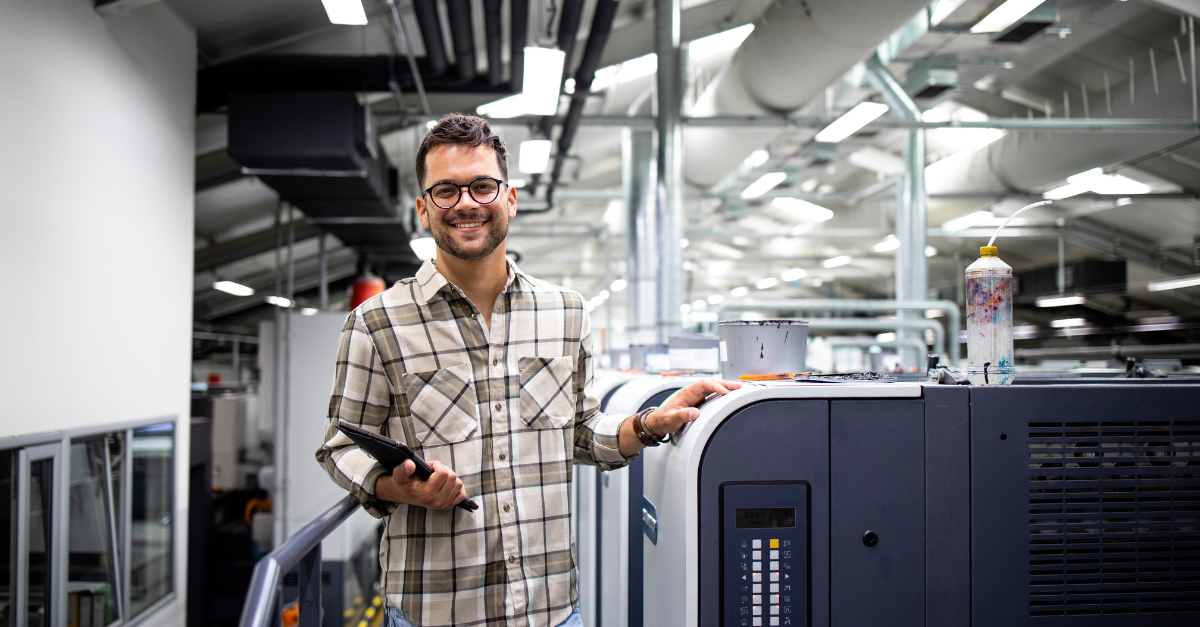Researchers 3D Print Metal in Zero G for ESA - 3ecruit
Made In Space changed the world when it installed the Zero-G Printer on the International Space Station (ISS) in late 2014. It changed the world once again when its second generation machine, the Additive Manufacturing Facility, was put aboard the ISS earlier this year to become the first commercial 3D printer in space.
As exciting as printing plastic in space may be, humanity’s ability to manufacture objects in space will only begin to truly take shape when we can 3D print metal objects. For this reason, Luke Carter, of the Advanced Materials and Processing Laboratory (AMP Lab) at the University of Birmingham, has made it his mission to 3D print metal in microgravity.
While Carter and his team at AMP Lab have yet to send a metal 3D printer into space, they are making significant headway and have recently demonstrated the ability to 3D print metal in microgravity aboard three separate parabolic flights. ENGINEERING.com spoke with Carter to learn more.
Zero-G Metal 3D Printing Ain’t Easy
Due to the fact that Carter and his team are in the process of seeking patents and funding for subsequent research, the University of Birmingham Postdoctoral Researcher was reluctant to give up too many details about the project. What he did reveal, however, provided a glimpse into the difficult nature of 3D printing without the help of gravity.
Working closely in collaboration with the European Space Agency (ESA), Carter and his fellow researchers have developed a demonstrator device capable of printing aluminium in microgravity. While metal 3D printing often evokes images of powder bed processes, like selective laser melting, Carter explained that powder wouldn’t do in an environment like the ISS, as it would be difficult to keep the powder in place. Instead, the Birmingham machine more closely resembles the metal 3D printing process of directed energy deposition (DED), and uses an aluminum wire as feedstock.
Ensuring that the material stays in place without gravity is a unique problem to solve. “One of the challenges with 3D printing in microgravity is keeping the material where you put it,” Carter said. “It sounds odd, but if you put an object on a table on Earth, it stays there. But when you’re floating around, as I’ve learned on the parabolic flights, things don’t necessarily stay where you put them. More importantly, small forces can just send things off in strange directions.”
Without giving away too much detail about the mechanisms involved, Carter explained how the technology managed to keep the printed object in place. “We’re not relying on gravity for things to drop into position. We’re essentially using the surface tension of the molten material to feed our wire into and keep it in place,” Carter said. “We’ve also developed some different ways of keeping the material attached to the substrate. I can’t say too much about that and why we have to worry about that, but it’s certainly of interest.”
Like a DED machine, such as the plasma arc system developed by Norsk Titanium, the Birmingham device creates a near net shape part. The printed object would necessarily have to be machined to its final dimensions. “The process itself is inherently a near net shape process. It is not ever going to produce the geometric accuracy that you see coming out of a high-end [powder bed] 3D printer. It’s just not that kind of process. Being wire feed, its resolution is limited in that way.”
For this reason, Carter envisions the use of a CNC-type machine on the ISS at some point in the future to ensure that printed metal parts can be properly finished. This would be essential for “mating” pieces, in which two parts need to fit snugly together, as well as removing support structures, though Carter believes it’s possible to print support structures with built-in weak points to easily snap them off.
Another issue his team had to consider was the power requirements of the ISS. For the project, it was necessary to ensure that the printer used less than 1500 watts of power. Carter’s team managed to keep it below 1300. “What we developed is quite efficient in terms of getting the energy where we need it. It runs at about 1300 watts, which is a little bit less than your standard electric kitchen kettle.”
Test Flights in Microgravity
The project is the result of about three years of work, with one 18-month project devoted to developing the concept and a second 18-month project spent bringing it into reality. The last six months alone were used to prepare the system for use in the parabolic flights necessary to simulate a microgravity environment.
Carter, as well as PhD student Amanda Field and ESA aeronautical engineer Andrea Amaldi, brought the device to Bordeaux, France. There, Carter and his team spent a week setting up the experiments and a week flying with Novespace, a company devoted to flying its A300 ZERO-G in a parabolic shape that causes near weightlessness at the height of each arc. Altogether, the team up had three flights, with 31 weightless parabolas per flight lasting about 22 seconds each.
“So, I’ve had just over half an hour of weightlessness, which is quite a nice thought. It was an excellent experience,” Carter said of the flights, part of the ESA’s 65th parabolic flight campaign.
Though 22 seconds per parabola is a brief amount of time, it was enough for Carter’s team to test its technology. “Really the question we wanted to answer is does this method of depositing metal work in microgravity as we think it should,” Carter said. “The answer was largely yes. Of course, we learned a huge amount by doing this process. We managed to put down some thin tracks of material, which is really positive.”
The idea that the surface tension of the molten metal could keep the material in place was really just a hypothesis, but, upon 3D printing during parabolic flight, Carter was able to prove the hypothesis correct. “That was one of the unknowns really about developing the system,” Carter said. “We thought it would work, but you don’t know until you try these things, and it seemed to work really well.”
Next Steps for Metal 3D Printing in Zero G
As the research group seeks further funding for the project’s development, there are areas of the technology that still need to be developed. For instance, Carter and his team have mostly used the device for 2D traces.
“It’s mostly kind of a proof of concept,” Carter explained. “We have a build area which is 100 mm x 100 mm—just a small table basically. It’s only 2D extrusion-type stuff moving in the X-, Y- and Z-axes at the moment. No crazy 5-axis motion or anything like that.”
Another consideration before sending the technology to the ISS is how to ensure a steady temperature while printing. “In zero gravity, you lose convection. Suddenly, everything is staying a lot hotter.” Carter added, “We’re melting aluminium, so things are getting pretty warm up to about 500 or 600 degrees.” For the next model of the technology, the Birmingham group will aim to test out various cooling methods to control the temperature of the system.
How long until the technology is sent to the ISS? It’s difficult to determine, particularly since so much of the project will be guided by what funding the AMP Lab is able to receive. In a perfect world, however, Carter believes that 2020 is a goal to aim for.
The installation of such a metal 3D printer on the ISS will then lay the groundwork for extended travel into space. Carter explained, “Everyone asks, ‘Are we going to go to Mars in 50 years’ time, or are we going to go back to the moon?’ At some point, when you look at these long-term missions, you have to say, “Hang on, we can’t take everything we need with us. We’re going to have to make stuff while we’re there.”
He added, “Plastic components can go so far, but, at some point, there’s going to be an important valve coupling or something that’s going to break, and you’re not going to have a spare with you. You can’t take a spare part for everything on your spaceship.”
Original Article written and posted by Michael Molitch-Hou for Engineering.com











